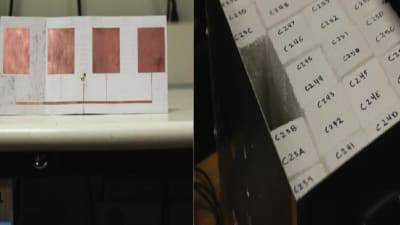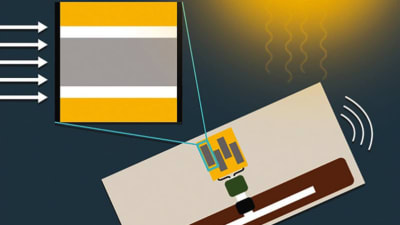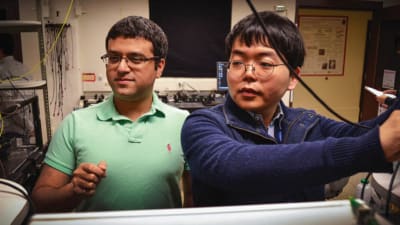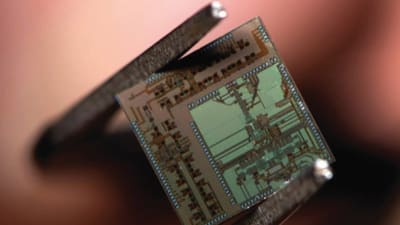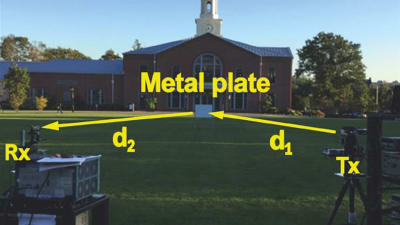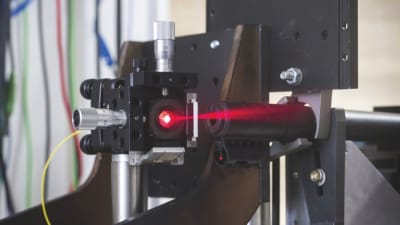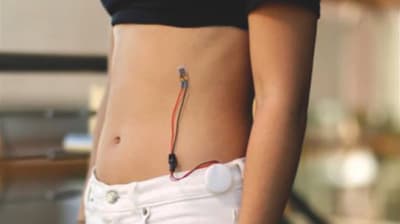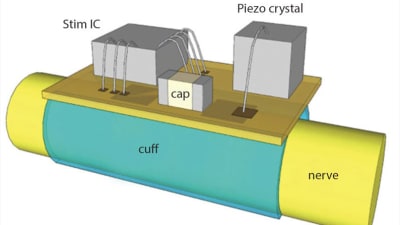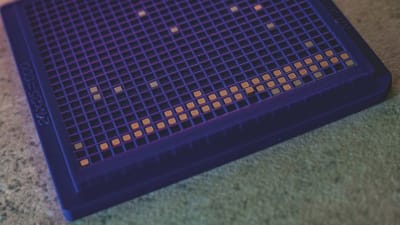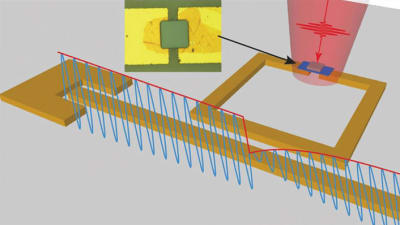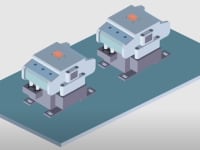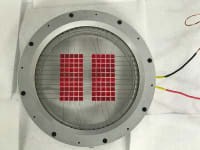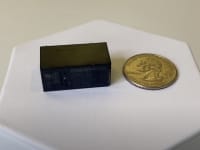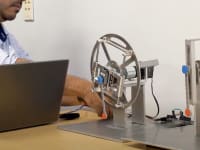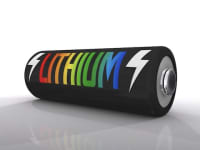47
61
169
-1
150
30
Briefs: Sensors/Data Acquisition
A technology uses a combination of WiFi signals and accelerometer technology to track devices in near-real-time.
Briefs: Sensors/Data Acquisition
The reader uses a frequency multiplexer to boost its ability to accurately locate a greater number of RFID tags.
Briefs: Semiconductors & ICs
RFID-based devices work in indoor and outdoor lighting conditions and could transmit data for years before they need to be replaced.
Briefs: RF & Microwave Electronics
A novel approach was developed to improve communications range and allow for covert behavior using a team of robots for future multi-domain operations. Specifically, researchers demonstrated...
Briefs: Photonics/Optics
Engineers at the University of Illinois have found a way to redirect misfit light waves to reduce energy loss during optical data transmission. In a study,...
Briefs: Sensors/Data Acquisition
Software Applications for the Control and Management of the Amine Swingbed Experiment
The Swingbed software applications provide for the control, command, fault detection, fault recovery, and telemetry monitoring aspects of the Amine Swingbed experiment. These software components are the Swingbed Loader Computer Software Configuration Item (CSCI),...
Briefs: Communications
A new wireless transceiver was developed that boosts radio frequencies into 100-gigahertz territory, which is quadruple the speed of the upcoming 5G, or fifth-generation, wireless communications...
Briefs: Robotics, Automation & Control
Technique Locates Robots and Humans in GPS-Challenged Environments
An algorithm enables localization of humans and robots in areas where GPS is unavailable. The Army needs to be able to localize agents operating in physically complex, unknown, and infrastructure-poor environments. This capability is critical to help find dismounted soldiers and for...
Briefs: Aerospace
Multi- and Wide-Band Single-Feed Patch Antenna
A novel patch antenna technology was developed that provides significant benefits to NASA satellite communication applications, offering a unique wide-band/multi-band operating capability. For other non-space applications, the antenna design also offers broadband capability with high gain for...
Briefs: Imaging
Antenna Near-Field Probe Station Scanner
Antenna characterization techniques are often expensive and time-consuming. NASA’s Glenn Research Center developed a highly versatile and automated system to perform characterization of single or multiple small circuit antennas, printed on-wafer or on other substrates, by measuring the antenna’s...
Briefs: Software
Self-Configurable Radio Receiver System and Method
A self-configurable radio receiver system was developed for relaying communication signals from multiple deep space assets. Most conventional radio receivers are hardwired to receive a specific type of signal and are incapable of receiving other types of signals without preconfiguration according...
Briefs: Communications
A soft and conformable health monitor can broadcast electrocardiogram (ECG), heart rate, respiratory rate, and motion activity data as much as 15 meters to a portable recording device...
Briefs: Communications
Today’s cellular networks and Wi-Fi systems rely on microwave radiation to carry data but the demand for more bandwidth is quickly becoming more than microwaves can handle. That has...
Briefs: Photonics/Optics
Since 1998, almost 2,000 shoebox-sized satellites known as CubeSats have been launched into space. Due to their small frame and the fact that they can be made from off-the-shelf parts,...
Briefs: Energy
A pocket-sized antenna was developed that could enable mobile communication in situations where conventional radios don’t work such as underwater, through the ground, and over very long...
Briefs: Test & Measurement
Scientists of Karlsruhe Institute of Technology (KIT) and École Poly-technique Fédérale de Lausanne (EPFL) have reported that they achieved the fastest distance measurement attained so far....
Briefs: Sensors/Data Acquisition
It has been known since the early 1960s that hexagonal sampling is the optimal sampling approach for isotropically band-limited images, providing a 13.4% improvement in sampling efficiency over...
Briefs: Wearables
Researchers developed a wearable, disposable respiration monitor that provides high-fidelity readings on a continuous basis. It's designed to help children with asthma and cystic...
Briefs: Connectivity
In 2016, UC Berkeley engineers demonstrated the first implanted, ultrasonic, neural dust sensors. Now, taking the next step, the smallest-volume wireless nerve stimulator was developed, called StimDust...
Briefs: Internet of Things
Researchers have created technology that is 10 times more reliable than current methods of producing unclonable digital fingerprints that can be used to...
Briefs: Test & Measurement
Accurately measuring semiconductor properties of materials in small volumes helps engineers determine the range of applications for which these materials may be suitable in the...
Briefs: Transportation
Aircraft currently fly based on coarse estimations of environment and aircraft state. Real-time measurements are traditionally restricted to laboratory environments (e.g. wind tunnel) due to the size and weight...
Briefs: Photonics/Optics
Experimental photonic switches developed at UC Berkeley have shown promise toward the goal of fully optical, high-capacity switching for...
Briefs: Wearables
An interdisciplinary Northwestern University team has developed a pair of soft, flexible wireless sensors that replace the tangle of wire-based sensors that currently monitor babies in hospitals’...
Briefs: Mechanical & Fluid Systems
Anew electromyography biofeedback device that is wearable and connects to novel smartphone games may offer people with incomplete paraplegia a more affordable, self-controllable therapy to enhance their...
Briefs: Software
Algorithm Predicts How Electromagnetic Waves Interact with Materials at the Smallest Scales
Magnetic materials can attract or repel each other based on their polar orientation — positive and negative ends attract each other, while two positives or two negatives repel. When an electromagnetic signal like a radio wave passes through such materials,...
Briefs: Sensors/Data Acquisition
Light is widely used for communications, carrying phone conversations and video signals through fiber optic cables around the world in pulses composed of many photons. Single photons...
Briefs: Photonics/Optics
Silicon is a naturally occurring material commonly used as a semiconductor in electronic devices; however, researchers have exhausted the potential of devices with semiconductors made of...
Briefs: Test & Measurement
A current-steering digital-to-analog converter (DAC) was developed that achieves improved switching times (up to 75% faster) in high-speed (gigahertz), high-resolution (8-14 bits)...
Top Stories
Blog: Manufacturing & Prototyping
2025 Holiday Gift Guide for Engineers: Tech, Tools, and Gadgets
INSIDER: Research Lab
Scientists Create Superconducting Semiconductor Material
Blog: Software
Quiz: Materials
Blog: Aerospace
Tech Briefs Wrapped 2025: Top 10 Technology Stories
Blog: Manufacturing & Prototyping
Webcasts
 Upcoming Webinars: AR/AI
Upcoming Webinars: AR/AI
The Real Impact of AR and AI in the Industrial Equipment Industry
 Upcoming Webinars: Motion Control
Upcoming Webinars: Motion Control
Next-Generation Linear and Rotary Stages: When Ultra Precision...
 Upcoming Webinars: Energy
Upcoming Webinars: Energy
Hydrogen Engines Are Heating Up for Heavy Duty
 Podcasts: Medical
Podcasts: Medical
How Wearables Are Enhancing Smart Drug Delivery
 Podcasts: Power
Podcasts: Power
SAE Automotive Podcast: Solid-State Batteries



